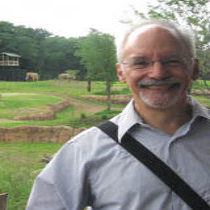Landscape Architecture for Landscape Architects › Forums › GENERAL DISCUSSION › Designing Natural Play Spaces for Children
- This topic has 1 reply, 13 voices, and was last updated 12 years, 4 months ago by
 Trace One.
Trace One.
-
AuthorPosts
-
March 22, 2013 at 5:36 am #155404
 Lisa JacksonParticipant
Lisa JacksonParticipantI think its very important to connect the children with nature. Gardening is one of the best way to connect it. Landscape contractor Los Angeles are held some programs in schools for the topics of landscaping and gardening.
March 22, 2013 at 3:15 pm #155403 Jill PrimakParticipant
Jill PrimakParticipantI am really enjoying this thread. I’m so glad to hear such universal support for nature-based playgrounds as an alternative (or addition) to traditional playgrounds.
Your observation, Trace One, about not only the necessity for connecting children and families with nature, but doing so as a part of children’s daily lives is the mission statement of the non-profit I work for- Nature Explore, a collaborative project of Arbor Day Foundation and Dimensions Education Research Foundation.
Our focus is on nature-based outdoor classrooms. While we do work with libraries, children’s museums, parks and domestic violence shelters, the majority of our work is in schools (especially early education programs). This is where those daily connections are made. These spaces allow children to explore the wonders of nature using open-ended natural materials over manufactured plastic products. And they inspire educators as they support these child-driven authentic connections with the natural world. My work as a designer is to develop these spaces using my expertise as a landscape architect in a addition to my knowledge of child development- an important key to creating quality spaces for children.
If you would like to learn more about outdoor classrooms, our website is:
An excellent example of a nature-based outdoor classroom is at Arbor Day Farm in Nebraska City, NE:
March 23, 2013 at 1:52 am #155402 Katherine ClarkParticipant
Katherine ClarkParticipantOur high desert area is working to educate kids on the natural, drought-resistant plants and a push towards a more natural and less uniform park landscape is building. Because so many of the parents have forgotten about the non-bluegrass park, signs are posted both conspicuously and hidden like little garden gems of knowledge in between columbines, or a plaque in the midst of a patch of buffalo grass. It’s planned, but with native vegetation. Our “Bark Parks” are taking a similar turn and our kids love visiting the “wild” parks over the alternatives. Big rocks, climbing walls – I love the previous post where posts are available for play!
April 1, 2013 at 7:21 pm #155401 Jeffrey LindstromParticipant
Jeffrey LindstromParticipantWow! Great to hear all of the positive input and different perspectives. Its so refreshing to see so many people who are aware of the importance of establishing this meaningful connection between children, adults, and the natural world.
There are indeed a variety of different ways to approach this issue, but as Landscape Architects I feel like it is one we are suited to address better than almost any other profession. We are constantly facilitating that crucial relationship between people and the land, and what better place to start than early childhood!
I too wish to see the days where children freely roam the uninhabited nooks of nature and are able to run free. Unfortunately, those experiences are honestly not available for most children these days. Many of these wild spaces that had such a profound impact on our lives have been developed, protected, or marked as private property. We need to be aware that many people who are parents now were, in fact, children who did not get to experience a nature-rich childhood, so when we stress the importance of getting children outside, they do not even know where to begin, or what to do. But exploring solutions to these challenges is one of the most exciting parts of the profession.
April 3, 2013 at 1:27 pm #155400 Leslie B WagleParticipant
Leslie B WagleParticipantI have a bit of “mixed reaction” to the museum approach that sort of expands on older roles but still seems a bit contrived, like this first one (although during a lot of the year in that climate, to keep up traffic it might be necessary).
http://www.trailheadkids.org/about/the-trailhead-video/
Even in warm climates or places with limited space like a small preschool, designers could find efficient use of space for maximum benefit.
Then there are more spacious summer camps (that were always filling a need) and lately bigger institutions that have gone for some “outdoors” component or adaptations, which might be of interest or involve LA/s.
http://www.hocm.org/page.php?id=473
http://www.childrensplaygarden.org
http://www.avalongparkandpreserve.org
http://aldoleopoldnaturecenter.org
Not to over blast the topic, but I was looking for something else and kept running into them.
April 3, 2013 at 4:46 pm #155399 Rob HalpernParticipant
Rob HalpernParticipantYou asked about spaces, but it more often comes down to people, I think:
http://www.nytimes.com/2013/03/31/nyregion/lessons-found-in-the-mud.html?hp
April 5, 2013 at 2:37 am #155398 Leslie B WagleParticipant
Leslie B WagleParticipantAnother one:
April 9, 2013 at 8:42 pm #155397 Jill PrimakParticipant
Jill PrimakParticipantI would like to invite everyone following this thread and interested in designing quality nature-based outdoor classrooms to the The 2013 Nature Explore/Outdoor Classroom Project Leadership Institute which will be held at Arbor Day Farm, Nebraska City, NE, July 21-24, 2013.
http://www.natureexplore.org/workshops/designprofessionals.cfm
Institute participants will gain in-depth Nature Explore and Outdoor Classroom Project information in a beautiful, nature-filled setting at Lied Lodge and Conference Center at Arbor Day Farm.
Designers will explore research-based guiding principles for outdoor classroom design and discuss principles that lead to sustainability of these wonder-filled spaces. Enjoy times to explore nature and network with other participants during social gatherings in the evening (such as wine tasting and musical performances).
The designer track has been approved by Landscape Architecture Continuing Education System Providers.
[1.3 CEU; 13 professional development hours]
April 24, 2013 at 2:09 pm #155396 Leslie B WagleParticipant
Leslie B WagleParticipantI just wanted to add another link to a nice big whopper of a document I discovered on this topic:
http://naturalplay.files.wordpress.com/2010/07/naturalplay_infopacket_small.pdf
April 24, 2013 at 2:34 pm #155395Tanya Olson
ParticipantThanks so much for sharing, Leslie. This is one of the better natural play ‘books’ that I have seen. I LOVE the Berkley Bayfront playground – it looks like a junkyard – and a kid is going down a slide on a pair of skis!!! Awesome! I would love to see more examples of how to construct some of the elements of the playground – for instance the log steppers up an embankment – is there drain rock underneath them? Are they bolted together in any way so they don’t move or just packed into the earth? Are the logs pressure treated and sanded with chamfered edges? I’d love to know more about what works and what the failures are….
April 27, 2013 at 12:24 pm #155394 Leslie B WagleParticipant
Leslie B WagleParticipantI liked the weird climbing domes of what seemed like natural branch forms. I suppose they’re not rocket science to construct, but what about the dreaded “liabilities” as they age etc.?
Meanwhile here is a page on some fascinating water features that don’t quote price but I imagine are very expensive (also look at other uses in the overall site):
http://flowform.net/playgrounds
I am also interested in whether anybody has any experience creating “outdoor musical instruments.” I know there are commercial sources of some types but I wonder about somehow making them of recycled materials? Hubcap gongs or something?
July 23, 2013 at 4:42 pm #155393Deborah Christman
ParticipantI just went through the wordpress pack. Wonderful! I had seen several of the playground examples in LAM, but it is so nice to have it all in one place. I can use some of it to inspire my colleagues and the head of grounds and facilities at my school district. Thank you.
July 23, 2013 at 7:01 pm #155392 Stephen LoveringParticipant
Stephen LoveringParticipantI had recently been asked to design a “natural playground” in a subdivision near Calgary, AB. After several hours of practically falling over myself with excitement designing this playgound i got a very sharp reality check from a member of the towns park’s department.
He was not interested in a park that was made from fallen down trees (that you would have to replce in 5-10 yrs or even worse was a law suit waiting to happen), natural boulders (that a kid could stub their toe on) or earth mounds with hollows (that would collect water). Instead our direction was moved towards either the steel blue and red monstrosity that you see in every playground from Orlando to Vancouver or a concrete version of the natural log and boulder combination.
We went with a hybrid of the two and are awaiting construction. While i think the playground will look great and will be fun for kids to play on it is certainly not a “natural playground” with all the benefits that come along with it.
What chance do we have when our towns and cities are putting such strict instruction on what goes in. Its not based on “how much will the child learn” or “how much fun would a child have” but rather “will this boring piece of equipment still be here to NOT entertain the kids in 20 yrs”. Its all a money thing!!!!
July 27, 2013 at 8:07 pm #155391 Goustan BODINParticipant
Goustan BODINParticipantStephen, if not too late in the process, you could still add up a few fruit/nuts trees. Teach the kids contact with nature, food does not come out in a box from a factory. Milk or cheese either.
You will help kids in many ways with those prefab playgrounds, but you wont get them attracted to nature.
I’m surprised everyone in this thread is wondering how to get kids outside, but no-one has mentioned yet about fruits (did I miss it ?). Give the kids something they like to do best : picking up and feasting on fresh-from the tree fruits. Some of my fondest outdoor memories are of picking raspberries and strawberries, gooseberries, red and black currant. Not even mentioning spending (what seemed like) hours crushing hazelnuts/walnuts with a stone.
None of these plants require special maintenance or pose any threat, other than getting your fingers dirty. The biggest challenge they pose is for the LA to dare propose what seems the simplest possible things.
In all my projects (residential and hotels, administrative buildings as well), I have integrated fruit trees wherever possible, and berries/nuts next to playgrounds. Add up a few herbs (mint, sage, thyme…), that can be eaten and smell good anyways.
Surprisingly, ALL my clients have always liked the idea, whatever their origin and background. These plants are so easy to integrate in ANY planting plan without downside (other than making sure fruits dont spoil cars/furniture, pavement areas, dont fall somewhere were you would have to pick them up), you may even want to slip a few without telling anyone.
I slipped 2 mango trees for a condominium garden, without telling, and we will soon deliver construction docs. No-one bat an eyelid yet, just do it 🙂
-
AuthorPosts
- You must be logged in to reply to this topic.


